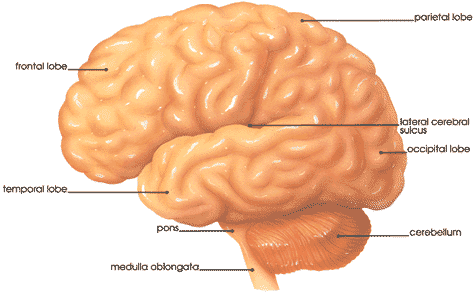
Brain

Brain
The following graphic shows the main anatomical features of the brain and their location:

Neuron
The neuron is the basic cell of the nervous system. It transmits nerve impulses. A typical neuron has a cell body containing a nucleus and two or more long fibers. Impulses are carried along one or many of these fibers, the dendrites, to the cell body; in higher nervous systems, only one fiber, the axon, carries the impulse away from the cell body.
The picture below shows the basic features of a neuron:

Neurotransmitters
Home, Definition,
Development,
Pathology,
Psychology,Sociology,
Treatment